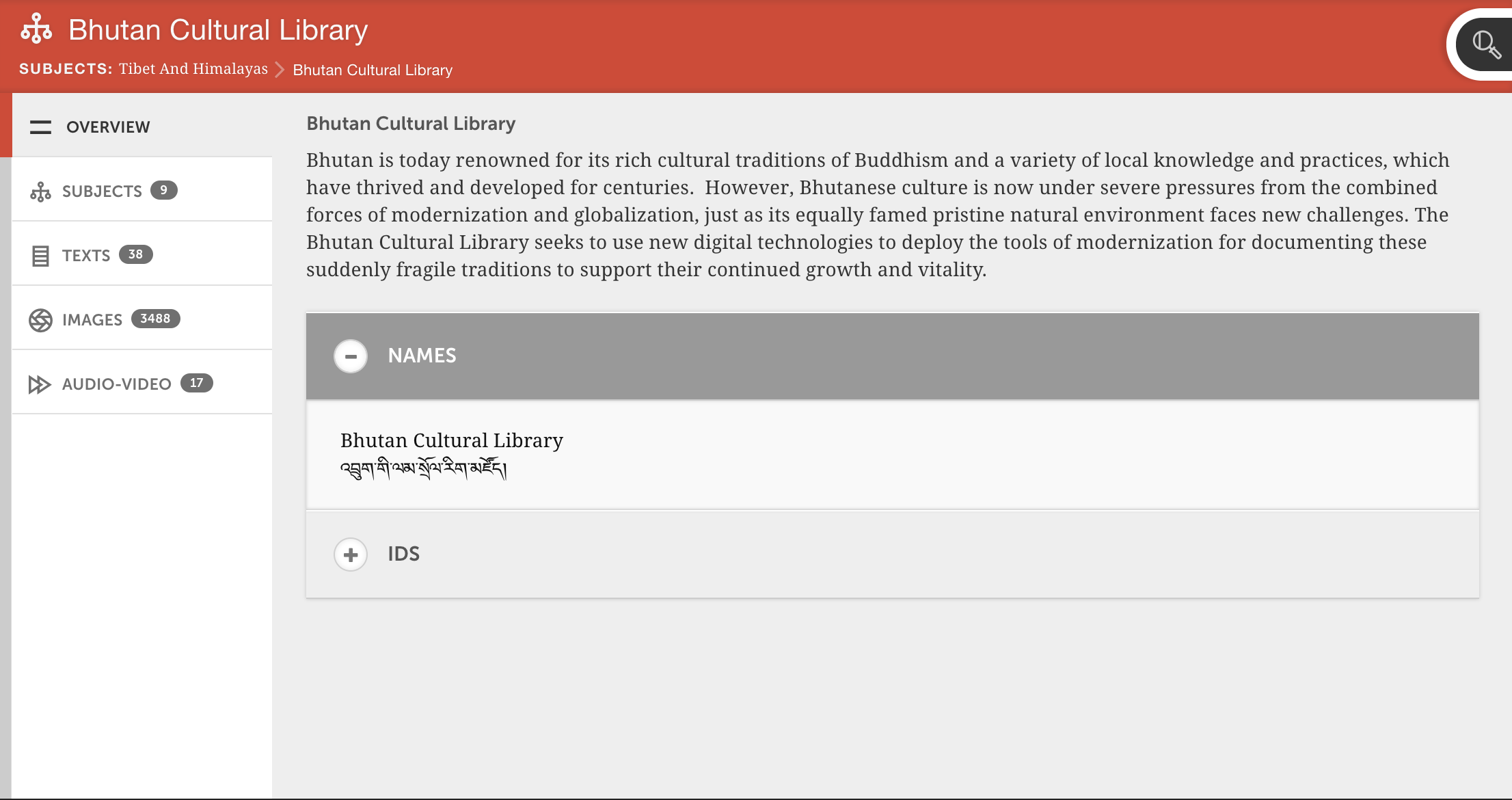SHANTI developed Knowledge Maps to help you make annotated, hierarchical "maps" of areas of knowledge. A knowledge map is a hierarchical tree of labels, or terms.
You can contribute to existing terms or make your own. Currently, there are two types of Knowledge Maps: subjects and places. Each subject or place includes:
- one or more descriptions of the term
- resources across projects with the same label
To make a knowledge map, you first create a term in Subjects or Places. Then you label media from any of the Mandala tools with this term. You can represent terms in multiple languages, and each term can include descriptions with different authors.
In brief, Knowledge Maps lets you:
- represent an area of knowledge using a tree of categories and subcategories
- index resources according to a hierarchy of controlled vocabulary, then annotate that hierarchy
Example
Here's the Bhutan Cultural Library term from Subjects.
As you can see, the Knowledge Maps includes a description of the item alongside several thousand linked texts, images, sound and video. Clicking each link on the sidebar will show you a gallery of resources tagged with "Bhutan Cultural Library."
Related step-by-step guides:
